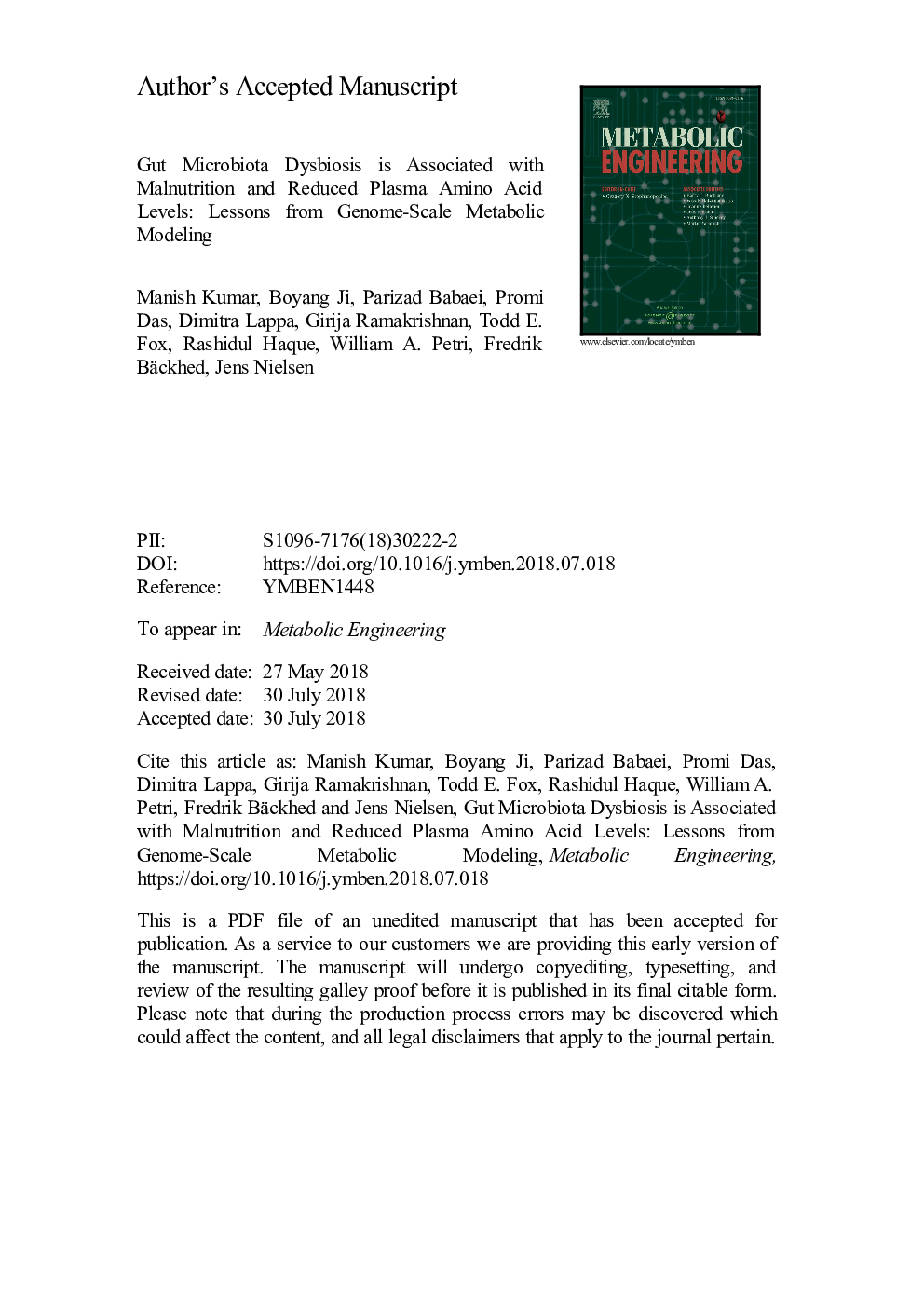| Article ID | Journal | Published Year | Pages | File Type |
|---|---|---|---|---|
| 6494028 | Metabolic Engineering | 2018 | 61 Pages |
Abstract
Malnutrition is a severe non-communicable disease, which is prevalent in children from low-income countries. Recently, a number of metagenomics studies have illustrated associations between the altered gut microbiota and child malnutrition. However, these studies did not examine metabolic functions and interactions between individual species in the gut microbiota during health and malnutrition. Here, we applied genome-scale metabolic modeling to model the gut microbial species, which were selected from healthy and malnourished children from three countries. Our analysis showed reduced metabolite production capabilities in children from two low-income countries compared with a high-income country. Additionally, the models were also used to predict the community-level metabolic potentials of gut microbes and the patterns of pairwise interactions among species. Hereby we found that due to bacterial interactions there may be reduced production of certain amino acids in malnourished children compared with healthy children from the same communities. To gain insight into alterations in the metabolism of malnourished (stunted) children, we also performed targeted plasma metabolic profiling in the first 2 years of life of 25 healthy and 25 stunted children. Plasma metabolic profiling further revealed that stunted children had reduced plasma levels of essential amino acids compared to healthy controls. Our analyses provide a framework for future efforts towards further characterization of gut microbial metabolic capabilities and their contribution to malnutrition.
Related Topics
Physical Sciences and Engineering
Chemical Engineering
Bioengineering
Authors
Manish Kumar, Boyang Ji, Parizad Babaei, Promi Das, Dimitra Lappa, Girija Ramakrishnan, Todd E. Fox, Rashidul Haque, William A. Petri, Fredrik Bäckhed, Jens Nielsen,
